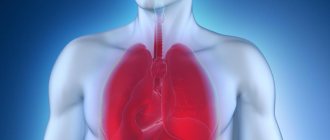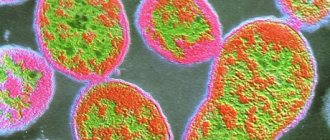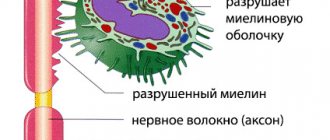Sexually transmitted diseases are infectious, that is, arising due to the introduction of various pathogens. They are broadcast from person to person only contact and mainly during sex.
The generally accepted definition does not raise questions among doctors, but for patients it is better to decipher it point by point:
- Pathogens can be bacteria, protozoa, fungi, rickettsiae or viruses. Mixed infection is possible - infection by several types of microorganisms at once.
- A sexually transmitted disease is a local and general manifestation of the impact of infection on a person.
- For infection, you need a source of infection (the patient or a carrier) and the route through which the pathogens are transmitted. Infection with a sexually transmitted disease is possible if there is:
- Sexual transmission during any sexual activity (traditional, oral or anal intercourse). Pathogens are transmitted from the skin or mucous membranes of the genitals, anus (anus), lips and oral cavity.
- Transmission - infection through blood - through transfusion of whole blood, red blood cells; infection from needles or instruments on which the blood of a patient or a carrier of infection remains.
- Contact and household route: through linen or objects that are contaminated with infectious secretions.
The word “venereal” is associated with the name of Venus, the Roman goddess of love: it emphasizes that diseases are more often transmitted through sexual contact.
Symptoms of sexually transmitted diseases in women
The pathological changes that lead to STI damage are the development of inflammation, leading to local changes in the genitourinary system.
The first signs of the appearance of sexually transmitted diseases, most often, have similarities in different infections.
At the same time, in women and men, the first symptoms may manifest themselves differently.
In women, the manifestations of infection are characterized by the following symptoms:
- The appearance of specific vaginal discharge, the quantity, color and smell of which depends on the type of infection.
- The presence of itching, burning, pain in the external genitalia and vagina. Discomfort may increase with urination.
- The appearance of a rash, which can be in the form of papules, blisters, growths, and ulcerative formations. The rash may be covered with a white or gray coating. The location of the rash may vary. It can cover the mucous membranes and skin of the anogenital zone and groin.
- The presence of painful sensations during sexual intercourse.
- Frequent urination in small volumes of urine.
- The appearance of paroxysmal pain in the lower abdomen. Sometimes it can be permanent.
Sometimes the symptoms of sexually transmitted diseases can be supplemented by intermenstrual bleeding, pain in the lumbar or pelvic region, attacks of nausea, and increased body temperature.
When engaging in unconventional forms of sex, signs of damage to the oral mucosa and tonsils may appear.
And with anal-genital contact - pain during bowel movements or bleeding from the rectum.
Some pathologies may be asymptomatic (myco- and ureaplasmosis, chlamydia).
They are usually discovered by chance during preventive examinations or during examination regarding the impossibility of conceiving a child.
Incubation period
The appearance of visible changes at the site of infection is the result of the reproduction and vital activity of STD pathogens. A small number of infectious agents can be rebuffed by the immune system and die, and for the development of signs of the disease, the law of the transition of quantity into quality needs to work. Therefore, any infectious diseases have an incubation period - a period of time necessary for the number of pathogens to increase and the first visible symptoms of infection to appear (for STDs - rash, discharge).
Typically, the incubation period figures are given in days, for viral infections - in hours. Incubation time may vary, which is associated with the duration of contact, the amount of a single dose of pathogens, the route of transmission and the state of the immune system of the recipient person. The incubation period (IP) is shortened in elderly and weakened patients, with transmission of pathogens and in patients with immunodeficiency syndrome.
IP for some common sexually transmitted infections (per day):
- Chlamydia: 7-21 days;
- Trichomoniasis: 7-28 days;
- Gonorrhea: 2-10 days;
- Urea and mycoplasmosis: 21-35 days;
- Syphilis: 21-28 days;
- Genital herpes: from 1 to 26, usually 2-10 days;
- Condylomas (pointed): 30-90 days.
Symptoms of sexually transmitted diseases in men
The first sign of a man being infected with an STI is the appearance of pain during urination and ejaculation.
Symptoms of sexually transmitted diseases in men are also characterized by:
- the appearance of rashes on the genitals. Sores or warts may form on or around the penis. The head may be covered with a white, gray or yellow-green coating.
- the appearance of pain and swelling of the testicles
- presence of itching on the head of the penis
- the appearance of mucous or purulent-mucous viscous discharge from the urethra of a yellow-green color
- if a man is a fan of unconventional forms of sex, then he may complain of damage to the anus, manifested by a painful condition
In most cases, signs of sexually transmitted diseases in both women and men may not appear immediately, but only after several months or years.
If at least one of the symptoms appears, an urgent examination will be required.
This is necessary in order to find out the cause of the pathology and the extent of organ damage, since the lack of timely treatment can provoke irreversible complications.
Statistics
Bacterial sexually transmitted diseases can be completely cured - chlamydia infection, gonorrhea and syphilis. Those that are caused by viruses cannot be cured - AIDS, genital warts and genital herpes. It is impossible to acquire immunity from curable diseases. Therefore, in some cases, people get sick a second and third time with the same disease.
Approximately 70% of people who turn to a venereologist with unpleasant symptoms are diagnosed with chlamydia. Every year, more than 100 million cases of this disease are diagnosed worldwide. It can be successfully treated with antibiotics prescribed individually by a doctor. And approximately half of the world has suffered from sexually transmitted diseases at least once. Sexually transmitted diseases such as syphilis and gonorrhea are transmitted to people in 97% of cases through sexual contact. But it is important to consider that the causative agent of these diseases can remain viable for several hours on a simple damp towel in a cool place and be transmitted to the person who picks it up next.
In the Russian Federation, intentionally infecting others with sexually transmitted diseases and concealing the fact of infection are subject to criminal liability and are punishable by law.
Absolutely all sexually transmitted diseases that are not diagnosed and treated in time become chronic and difficult to treat in the future. According to WHO statistics, approximately 10% of the world's population is infected with trichomoniasis. All sexually transmitted diseases are becoming more common, since only 24.8% of men constantly use condoms during sexual intercourse. It is condoms and marital fidelity that are the best means of protection so that any sexually transmitted disease does not spread.
Gonorrhea is also one of the most common diseases in the world, with more than 100 million people diagnosed and treated each year. Refusal of treatment provokes infertility, inflammation of the genital organs and serious problems with urination. The doctor will prescribe antibiotics in accordance with the characteristics of the body and the degree of the patient’s illness.
In the Russian Federation, deliberately infecting others with sexually transmitted diseases and concealing the fact of infection are subject to criminal liability and are punishable by law. At the beginning of 2017, it was established that in the Russian Federation alone there are more than 11,000,000 people living with HIV, including more than 2 million children. Very often, the diagnosis is discovered completely by chance during a routine annual examination in the hospital.
What kind of rash occurs with sexually transmitted diseases
Rashes appear when infected with the following types of diseases: syphilis, herpes, molluscum contagiosum, candidiasis, papillomavirus.
- Herpetic rashes are characterized by the appearance of blisters filled with transparent contents. As they burst, they leave behind very painful spots on the skin and mucous membranes.
- With syphilis, the first sign of the disease is the appearance of an ulcer (chancre), as the main symptom. The ulcer is an eroded surface, the bottom of which is hard and red in color. An ulcer is a painless formation. Its appearance is accompanied by an enlargement of the inguinal lymph nodes.
- With candidiasis, a white, cheesy coating forms on the genital mucosa. When you try to remove it, red spots remain.
- When infected with HPV, condylomas appear. They can be pointed or flat. Genital warts can form not only on the mucous membranes, but also on the skin.
- When affected by molluscum contagiosum in the pubic area, groin, perineum, labia, blisters with white contents form on the skin. When you press the indentation in the center of the bubble, a white curdled mass is released.
If a rash appears on the body, you should find out the cause of its appearance.
The localization of the rash is not limited to the genital area; it can be located on any part of the body.
As a symptom of sexually transmitted infections, ulcers can form, which gives the right to suspect infection with syphilis.
The appearance of spots can also serve as a sign of pathology.
Next, we will try to analyze in detail the symptoms of diseases that are classified as sexually transmitted infections.
Symptoms of certain sexually transmitted diseases
- Syphilis
The first sign of infection is the appearance of a cartilaginous compaction on the mucous membrane or skin.
A red, painless, ulcerative formation subsequently forms on its surface, covered with a grayish coating on top.
If plaque does not completely cover the formation, then a red rim forms around it.
The formation is called “chancroid”.
A month later, the ulcer disappears.
After some time, the body becomes covered with a finely spotted rash.
Papules and pustules may be present, which appear when the pathology becomes severe.
- Gonorrhea symptoms
The main symptom of gonorrhea in a man is urethritis.
In women, the pathology often becomes asymptomatic.
Manifestations of infection can be detected during examination by a doctor.
Discharge from acute gonorrhea is purulent in nature.
If left untreated, gonococcal infection can provoke the development of inflammation of the Bartholin gland.
As a result of blockage of its ducts, the resulting secretion accumulates in the cavity of the gland.
It suppurates with the formation of a cyst and the formation of an abscess.
A woman complains of painful cystic formation.
When examining the mucous membrane in the affected area, it is very hyperemic, and an increase in body temperature is also noted.
- Signs of trichomoniasis
The infection causes inflammation in the vagina.
What discharge indicates the presence of pathology?
The main sign of infection is a specific discharge: it is profuse, foamy, yellow-green in color, and accompanied by the smell of rotten meat.
Due to the release of enzymes (proteases), Trichomonas are capable of deep penetration into the mucous membrane.
By dissolving it, microorganisms injure microcapillaries.
During the examination, the doctor sees these areas of hemorrhage.
When examining the cervix in the speculum, it is severely hyperemic and strewn with hemorrhages.
Externally it resembles a strawberry.
- Chlamydia clinic
Symptoms of infection may be absent or mild.
Chlamydial infection most often affects the cervix.
Pathology can provoke very dangerous complications that lead to infertility.
The development of salpingoophoritis is manifested by the presence of cramping pain and bleeding.
As a result of the purulent process occurring in the tubes, adhesions develop that prevent the passage of the egg and the onset of fertilization.
If fertilization does occur, then as a result of tubal obstruction, the egg will not be able to penetrate the uterine cavity, which will provoke the development of an ectopic pregnancy.
The infection can also lead to the formation of adhesions in the uterine cavity.
- Symptoms of genital herpes
The main symptom that appears when infected with genital herpes is the formation of a watery rash.
The disease begins acutely, the patient complains of weakness, malaise, infection is accompanied by an increase in temperature.
The formation of rashes is preceded by a prodromal period.
There is discomfort at the site of the rash.
If left untreated, the disease becomes chronic.
Periods of exacerbations are followed by periods of remission.
Once the infection penetrates the body, it settles there forever.
- How do myco- and ureaplasmas manifest themselves?
Infection with urea and mycoplasma infections may go unnoticed.
In some cases, manifestations of infection are limited to symptoms of urethritis, in which clear discharge appears and itching is present.
Infection poses a threat during pregnancy, increasing the risk of spontaneous abortion or premature birth.
Possible consequences
At first glance, STIs seem harmless, especially those that occur without obvious symptoms. However, these diseases have very serious consequences. They often cause infertility. Some are fatal without treatment (syphilis, HIV, hepatitis). Infectious agents penetrate other organs, disrupting their functioning.
The most common complications of diseases caused by STIs:
- Urethritis.
- Cystitis.
- Pyelonephritis.
- Prostatitis.
- Bartholinitis.
- Erectile dysfunction in men.
- Impotence.
- Menstrual cycle disorders in women.
- Vaginitis.
- Endometritis.
- Inflammation of the uterine appendages.
- Extensive erosion of the cervix.
- Scars, adhesions in the uterus, tubes.
- Infertility.
- Miscarriages, premature births, stillbirths.
Many diseases are transmitted to a newborn baby during passage through the birth canal. There is also a risk of intrauterine infection (with syphilis, hepatitis). In children, these diseases often lead to fatal complications.
How long does it take for symptoms of a sexually transmitted disease to appear?
In some cases, signs of pathology go unnoticed or do not appear at all.
For different infections, the duration of the incubation period is not the same.
In some cases, the first symptoms appear almost on the second day after infection, and in others - after several weeks, months and even years.
It is impossible to answer with certainty on what day after contact with a patient sexually transmitted diseases appear.
It all depends on the type of infection and other factors.
When do the first signs appear after infection?
The state of the infected person’s immunity plays a decisive role here.
When infected with HIV, there are no immune reactions.
It is important to understand that in the absence of symptoms of the disease, the carrier of the infection poses a danger to the sexual partner.
The danger of the asymptomatic course of a sexually transmitted disease is also that the process can affect organ systems, leading to irreversible consequences.
Therefore, regular screening for STIs is recommended for sexually active people.
What sexually transmitted diseases have no symptoms?
Many sexually transmitted diseases can occur without symptoms. Such infections include:
- Syphilis
- Chlamydia
- Myco- and ureaplasmosis
- HIV
- Hepatitis
Gonorrhea can also be asymptomatic in women.
Hidden infections often cause complications, through which a sexually transmitted disease is discovered.
For example, when a patient consults a doctor about arthritis, it may be a reason to identify chlamydia.
If it is impossible to conceive – ureaplasma infection or gonococcal infection.
Screening
This term refers to a set of tests and studies performed by a person who has no symptoms of the disease. Screening is carried out to diagnose and detect diseases in the early stages, for example, cancer and other diseases.
Who should be screened and why should it be done?
- Everyone, without exception, must be tested for HIV. Even if you are a child or an elderly person, you still have no guarantee that you will not become infected. Since the immunodeficiency virus is transmitted through blood, there is a risk of becoming infected during medical procedures, for example, during surgery.
- At the first visit, pregnant women are prescribed tests for HIV, hepatitis, herpes, syphilis, and chlamydia. It is very important to go through all this, since infections cause irreparable harm to the fetus and even lead to miscarriage.
- Girls and women should regularly visit a gynecologist in order to get tested for the human papillomavirus. This disease provokes the development of cervical cancer. It is also necessary to immediately make an appointment with a doctor for those who are sexually active if any signs of ill health are observed. This may include strange vaginal discharge, itching, burning and pain.
- Patients with HIV must undergo regular examinations and tests so that, due to the nature of the disease, they can easily “catch” any infection. To do this, you need to be observed by an infectious disease specialist.
What sexually transmitted diseases manifest themselves by affecting other organs?
Sexually transmitted infections can manifest themselves not only as signs of damage to the genitals.
They can infect the oral cavity, conjunctiva of the eyeball, and anus.
Signs that are common to both women and men:
- Inflammation of the oral mucosa and pharynx, provoking the development of catarrhal phenomena
- Inflammation of the mucous membrane of the eyeball, causing inflammation, swelling, tearing and suppuration
- The appearance of blisters and ulcers on the lips and around the mouth
- Pustular rashes at the border of hair growth and forehead area
- The appearance of a rash on the soles and palms
- Inflammatory process of joints, causing a painful condition (pathology is more typical for men)
Symptoms of complications of sexually transmitted diseases
Infections that are asymptomatic or for which treatment was not started on time due to late seeking medical help can lead to serious consequences.
- Joint damage
Some sexually transmitted diseases can have a negative impact on the joints, provoking an inflammatory process.
Among them: gonococcal, mycoplasma and chlamydial infections.
Arthritis can be either unilateral or bilateral.
To confirm the presence of the pathogen, the patient is examined for STIs.
If fluid appears in the joint, a puncture is performed and a bacterial culture is performed.
The sensitivity of the pathogen to the effects of antibiotics is also determined.
A very important point in the successful outcome of the therapeutic effect is to identify the cause that caused the development of the inflammatory reaction.
And also the correct diagnosis.
If, nevertheless, the cause of arthritis is associated with an infectious process, then treatment with antibiotics is carried out.
- Eye lesions
Often the infection manifests itself in the form of conjunctivitis, and the pathology is often observed not only in adults, but also in children.
Babies can become infected not only at the time of birth from a sick mother, but also from non-compliance with personal hygiene rules, from parents if they suffer from pathology.
Eye diseases are often caused by chlamydial and gonococcal infections.
Based on the results of the diagnosis, the doctor prescribes treatment.
Enlarged lymph nodes
Very often, sexually transmitted diseases cause enlarged lymph nodes.
Passing through them, lymph is cleared of pathogens.
As a result, the lymph nodes become larger than normal.
Since the infection mainly affects the genitourinary system, enlarged lymph nodes are more often observed in the groin area.
When the oral cavity becomes infected, the submandibular and cervical lymph nodes become enlarged.
- Infertility
Infertility in men and women is often caused by sexually transmitted infections, which many do not even know about, since the symptoms of many sexually transmitted diseases do not always appear.
The latent course of the pathology provokes the spread of pathogens to the overlying parts of the pelvic organs, destroying them and provoking adhesions.
Such changes lead to the impossibility of fertilization and conception of a child.
Sexually transmitted infections
Clinicians classify all STDs as follows:
1. Typical sexually transmitted infections:
- lymphogranulomatosis (inguinal form);
- gonorrhea;
- syphilis;
- granuloma venereal type;
- chancroid.
2. Other STDs:
affecting primarily the organs of the reproductive system:
- trichomoniasis;
- chlamydia;
- urogenital shigellosis (usually found in people with homosexual sexual intercourse);
- mycoplasmosis;
- candidiasis lesions, which manifest themselves as vulvovaginitis and balanoposthitis;
- genital warts;
- gardnerellosis;
- molluscum contagiosum;
- herpes type 2;
- flat spots (pediculosis pubis);
- scabies;
mainly affects other systems and organs:
- cytomegalovirus;
- AIDS;
- neonatal sepsis;
- amebiasis (typical for people with homosexual contacts);
- Giardia;
- Hepatitis B.
The main difference between diseases and STDs is their high onocogenicity to changes occurring in the environment. The risk of contracting an STD also increases significantly through anal intercourse and the use of shared personal hygiene items.
Depending on the type of pathogen, sexually transmitted diseases are:
- viral;
- bacterial;
- parasitic;
- fungal;
- protozoans.
Important! Almost all bacterial and viral diseases are able to penetrate the placental barrier; accordingly, they are transmitted to the fetus in utero, disrupting its physiological development. Often the consequences of such infection appear several years after the birth of the baby in the form of dysfunction of the liver, kidneys, heart, brain and general developmental disorders.
Diagnosis of sexually transmitted diseases
Not all patients know where to go if signs of infection appear.
If symptoms characteristic of sexually transmitted infections appear, you should consult a doctor.
Which doctor will examine and treat the patient depends on the complaints presented.
- If signs of infection are associated with damage to the urogenital tract in men, a urologist should deal with the patient
- If symptoms of a disease of the genitourinary system appear in women, you can be examined by a gynecologist
- If there are signs of infection in the mouth, you should consult an ENT doctor
- If the pathology is localized in the rectal area, then the treatment will be carried out by a proctologist
- For conjunctivitis - ophthalmologist
- A venereologist is a specialist who treats patients with sexually transmitted diseases, regardless of the location of the inflammation
What tests do doctors prescribe for symptoms?
Since the doctor cannot make a diagnosis based on the presence of symptoms, laboratory confirmation is required.
In order for the doctor to prescribe effective treatment, it is necessary to conduct tests:
- The main diagnostic method for some infections (viral hepatitis, HIV, syphilis) is a blood test for antibodies. For other infections, this technique is a screening technique.
- In other cases, to detect the pathogen, smears are taken from the urethra, vagina and cervical canal. In case of infection through the oral-genital route, swabs are taken from the tonsils, in the case of anal contact - from the anus.
The examination of smears is carried out using a microscopic method.
This way you can diagnose the presence of gonorrhea, trichomoniasis, and candidiasis.
To determine the pathogen strain and select the antibiotic that will be used, bacterial culture is prescribed.
If there is no pathogenic flora in the smear, but there are signs of an inflammatory process, then additional studies are carried out: PCR diagnostics.
The technique is suitable for identifying all kinds of STD pathogens.
Usually a comprehensive examination is carried out even if there are signs of any disease, the signs of which are obvious.
Methods of transmission of STIs
STIs are spread through sexual contact—vaginal, oral, or anal. The gender of a person does not matter - they can go from a man to a woman, from a woman to a man, from a man to another man, or from a woman to another woman.
Many sexually transmitted infections can be spread through any contact between the genitals, mouth and anus, even if there is no penetration. For example, genital herpes is transmitted through direct skin-to-skin contact - microdamages on its surface are enough for infection.
Some STIs are transmitted in other ways. For example, HIV and hepatitis B are transmitted through sharing of injection needles and blood transfusions.
The use of barrier methods of contraception does not always guarantee safety. When using condoms for safe sex, it is important to follow the instructions on the package. Proper use of condoms makes them more effective. The following precautions must be observed:
- check the expiration date and integrity of the packaging;
- wear a condom before sex, not during it;
- use lubricant during sexual intercourse with a condom;
- remove and dispose of condoms correctly;
- never remove a condom and try to put it on again;
- never reuse a condom.
How quickly do symptoms go away when treating sexually transmitted diseases?
Before prescribing treatment, the specialist determines the type of causative agent of the pathology.
- In case of bacterial infection, antibiotics are prescribed. The course of taking such drugs depends on the type of pathogen and the severity of the process. Most often, the period of taking antibiotics does not exceed 10 days.
- For diseases caused by viruses, antiviral therapy is carried out.
- In case of pathology caused by protozoa, the patient is prescribed antiprotozoal drugs.
- If the infection is caused by fungi, the patient is treated with antifungals.
- To stimulate immune reactions, immunomodulators are prescribed.
- In order to strengthen the body, vitamin therapy is indicated.
Local treatment is also carried out, depending on the manifestations of the pathology, douching with antiseptics and vaginal suppositories with an anti-inflammatory effect are prescribed.
Symptoms that bother a woman or man may already disappear 2-3 days after the start of treatment.
If symptoms of sexually transmitted diseases appear, contact the author of this article, a venereologist in Moscow with many years of experience.
Prevention of STDs
- Prevention using condoms, male or female, reduces the risk of contracting sexually transmitted diseases, but none of the manufacturers promises a 100% guarantee. An attempt to protect yourself by wearing two condoms at the same time is doomed to failure: the latex breaks, and infection is possible in 50% of cases, as with unprotected sex.
- Pharmaceuticals: betadine, hibitan, miramistin are effective against gonococci, trichomonas, Treponema pallidum, herpes simplex viruses, but only if the drugs are used no later than 2 hours after sexual intercourse.
Spermicides (contraceptin, pharmatex) have not undergone clinical trials for protection against STDs, so their use as a means of prevention is not recommended.
The only and guaranteed way not to get sexually transmitted infections is a traditional monogamous relationship, a happy life with one partner.











